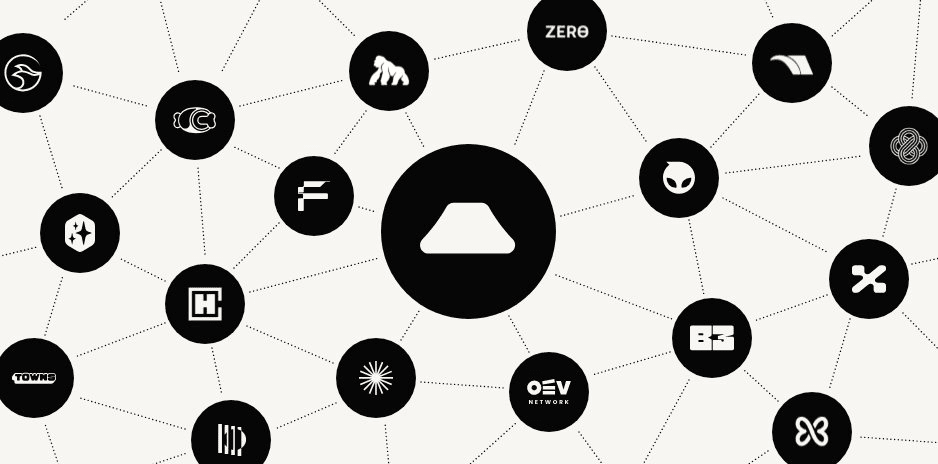Decentralized Finance (DeFi) is considered one of the most disruptive applications of blockchain technology. It not only eliminates traditional financial intermediaries but also provides transparent, efficient, and secure transaction methods through smart contracts. However, despite the enormous potential of DeFi, the difficulties of cross-chain operations remain an undeniable bottleneck.
As more blockchain networks emerge, decentralized applications face an unavoidable issue: how to seamlessly connect data, assets, and transactions across different blockchains. In traditional finance, cross-border transactions, asset clearing, and fund transfers have highly standardized processes, but in the decentralized world, different chains lack direct connections and unified standards, leading to fragmentation among blockchain ecosystems and hindering the comprehensive development of decentralized finance.
The cross-chain issue not only limits the liquidity of capital but also significantly diminishes the user experience of decentralized applications. Many users face cumbersome bridging processes, waiting times, and high transaction fees when switching between different chains. Developers often need to invest a lot of time and resources to address compatibility issues between different chains. For users wishing to participate in DeFi, these technical barriers and experience issues diminish their interest in this emerging field.
Caldera's Cross-Chain Solution
Caldera was born to solve this cross-chain problem. As an innovative decentralized protocol, Caldera provides a unique solution: Metalayer. This layer of technology allows data and assets to flow smoothly between different chains, offering users and developers an almost seamless cross-chain experience. Users only need to inform the system of the operations they wish to perform, and the remaining processes will be automatically executed by Caldera's resolver network. Users do not need to worry about the underlying blockchain networks, bridging operations, or high gas fees; all cumbersome operations are simplified into intuitive user requests.
The core advantage of this technology lies in its enhancement of user experience while addressing the issue of liquidity fragmentation in multi-chain ecosystems. In traditional multi-chain environments, different DeFi protocols and decentralized applications often provide services only on a specific chain, leading to inefficient capital circulation between different ecosystems. Caldera's cross-chain liquidity aggregation mechanism solves this problem. It connects the funding pools of multiple chains, allowing assets to flow freely, and enables rapid, low-cost interaction and sharing of funds between different protocols. This efficient flow of funds not only enhances the capital efficiency of the entire DeFi ecosystem but also reduces slippage and costs for users during transactions.
In addition, Caldera significantly enhances the efficiency of the entire decentralized financial system by reducing the time and resources required for cross-chain operations. Users can enjoy lower fees and shorter wait times when conducting cross-chain transactions, greatly increasing the competitiveness of the DeFi market. With the popularization of Caldera technology, cross-chain interoperability is no longer a barrier, and the scalability and accessibility of the decentralized financial market have been unprecedentedly improved.
The Future of Multi-Chain Ecosystems and Decentralized Finance
Caldera's cross-chain solution not only promotes the popularization of decentralized finance (DeFi) but also provides possibilities for other Web3 application scenarios. Whether it is decentralized lending, derivatives trading, or cross-chain payments for stablecoins, Caldera can provide seamless infrastructure support for them. This flexible architecture enables different blockchain ecosystems to achieve interoperability, creating an open, transparent, and efficient decentralized financial market.
As blockchain technology develops, more and more decentralized applications will rely on cross-chain technology to expand their functionality and influence. Caldera changes the operating methods of decentralized applications by optimizing the efficiency of cross-chain interactions, enabling different blockchains to cooperate efficiently within the same network. As fields such as DeFi, NFTs, and chain games mature, cross-chain technology will become the core infrastructure in the Web3 ecosystem, driving various industries towards decentralization.
From a longer-term perspective, the cross-chain solutions provided by Caldera are not limited to the financial sector; they also have enormous potential in areas such as cross-chain data sharing and decentralized governance. Through Caldera, the decentralized ecosystem will no longer be isolated islands fighting separately, but rather a tightly connected and collaboratively operating digital economy.
The success of Caldera represents a significant breakthrough in cross-chain technology, providing users with a higher quality decentralized finance experience and laying the foundation for the popularization of blockchain technology. In the future, as more protocols and applications connect to the Caldera network, we have reason to believe that the true popularization of decentralized finance is just around the corner, and blockchain technology will bring unprecedented changes to the global economy.
@Caldera Official #Caldera $ERA


